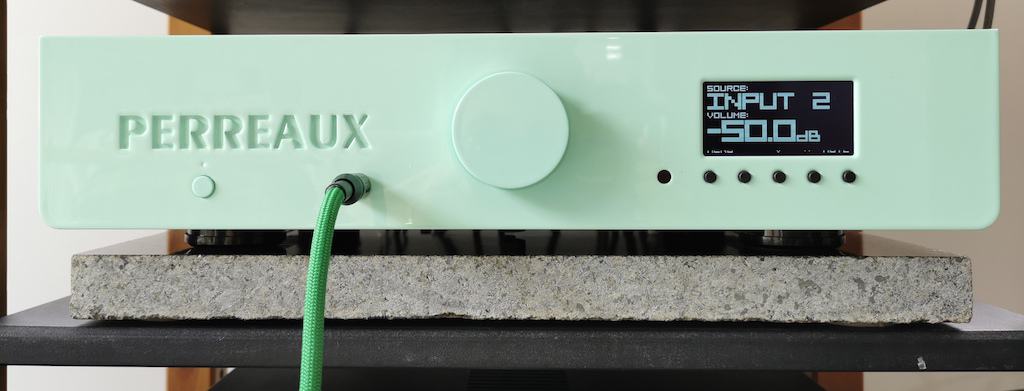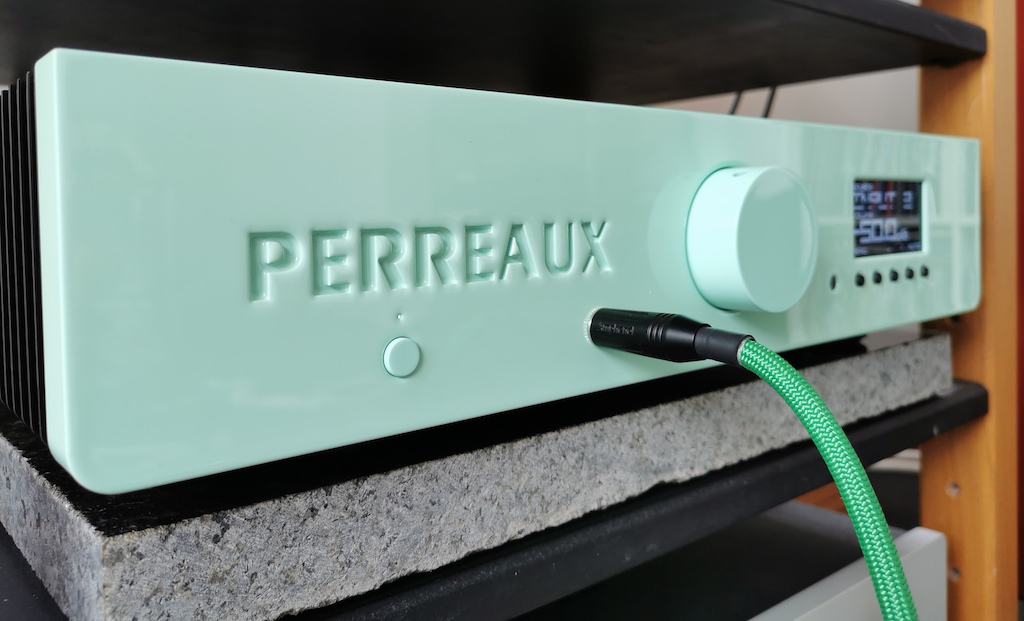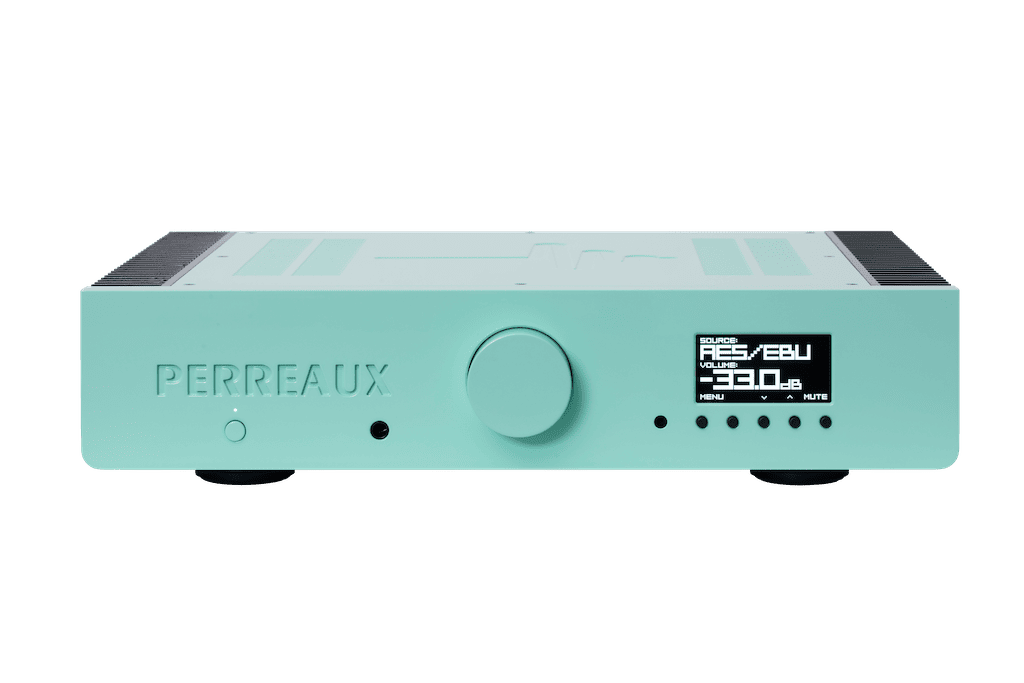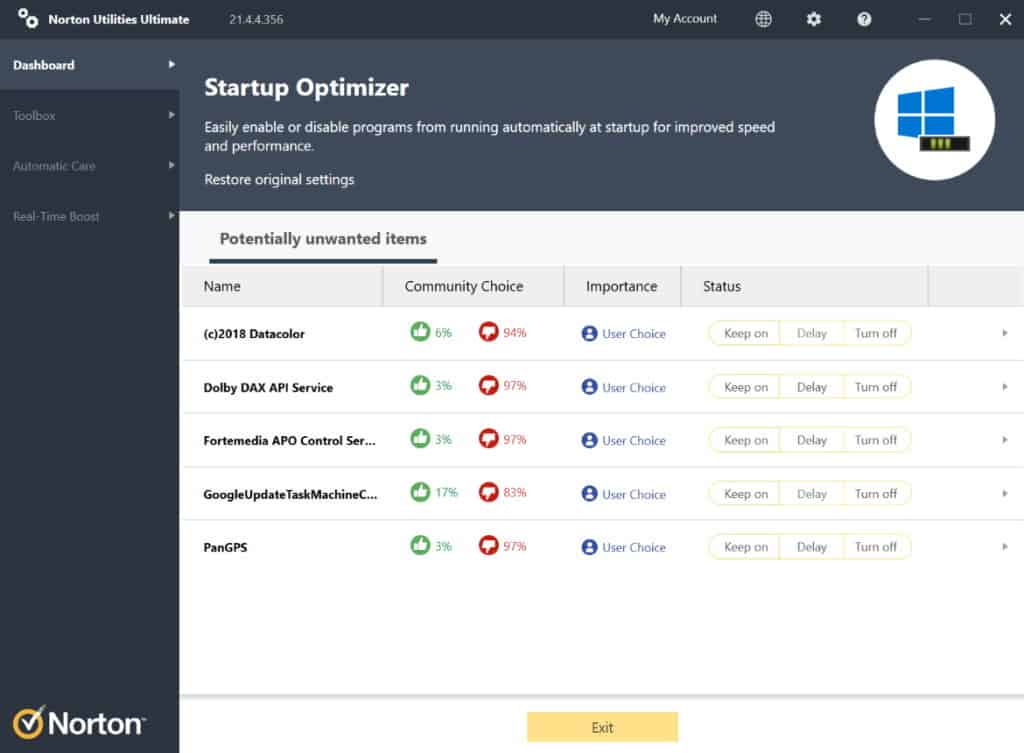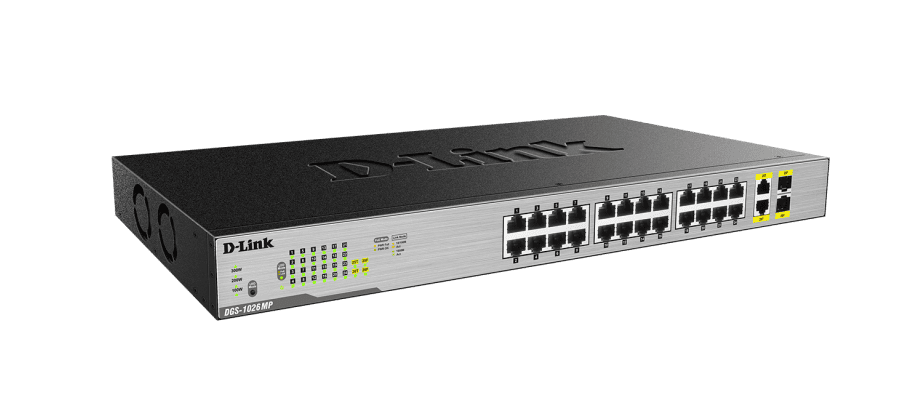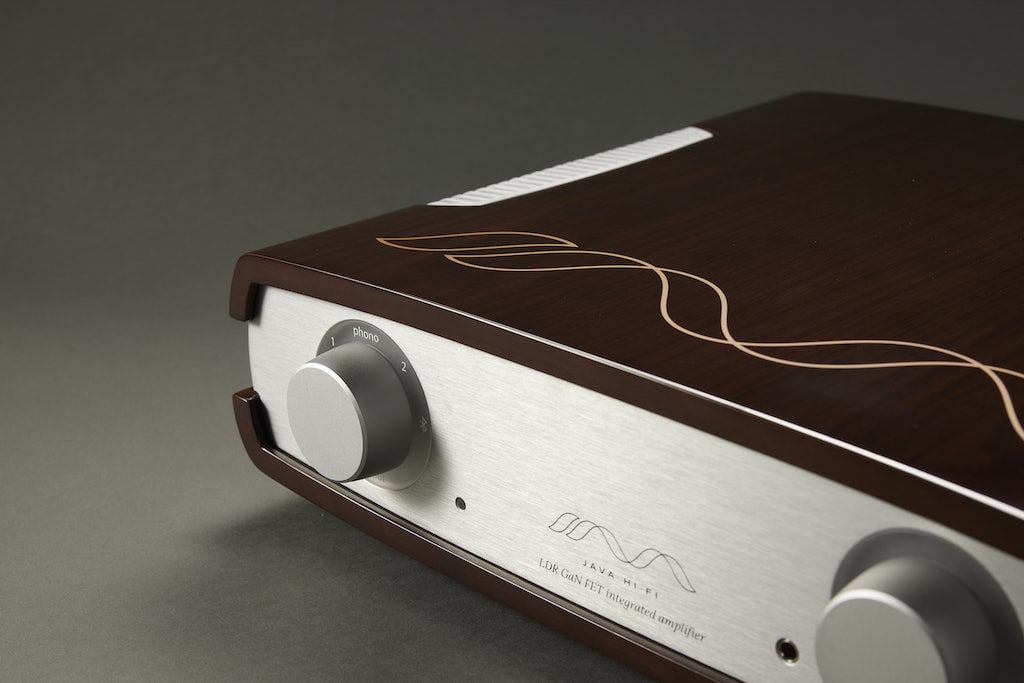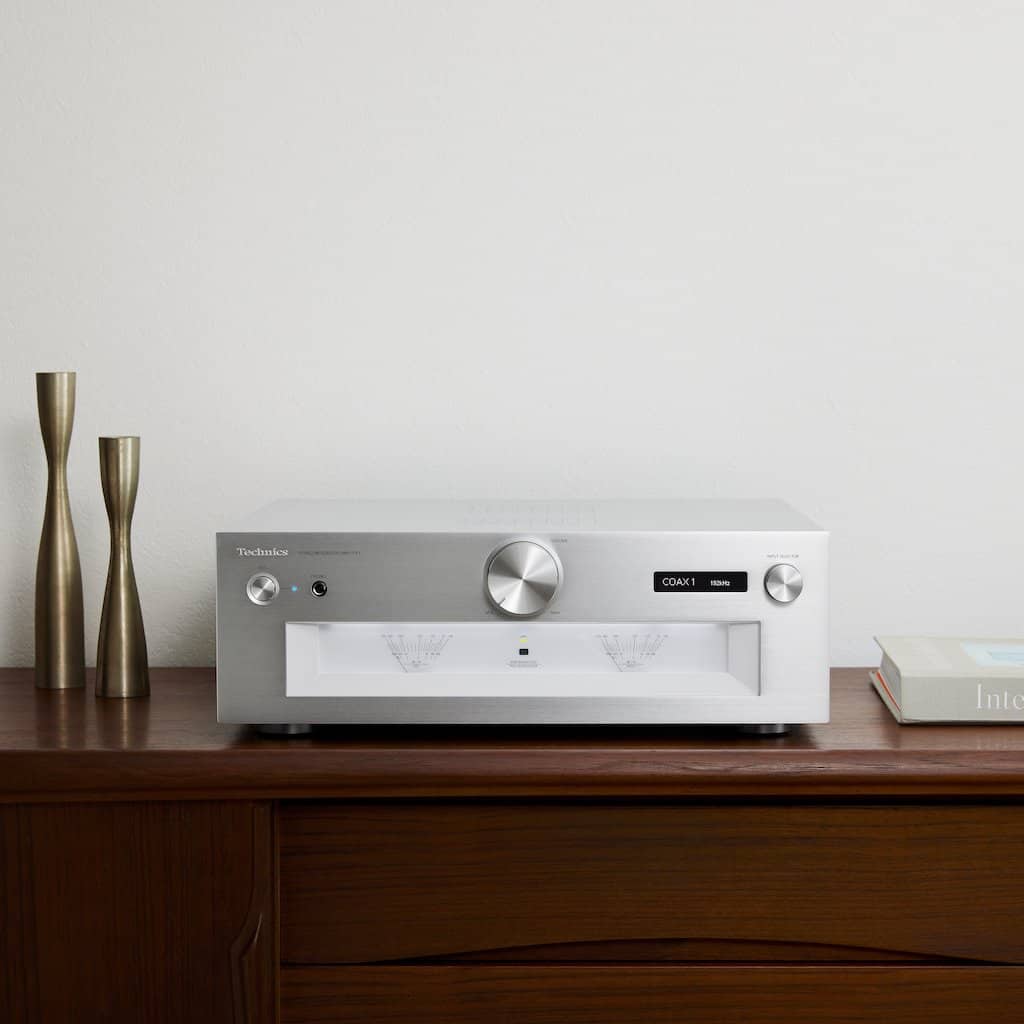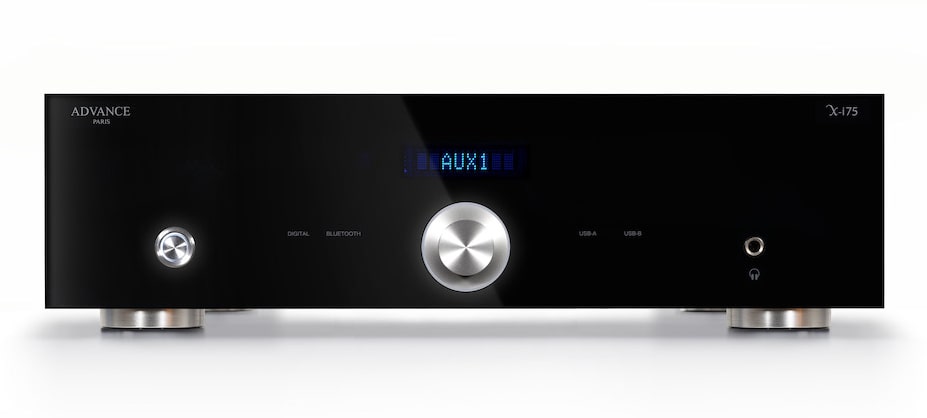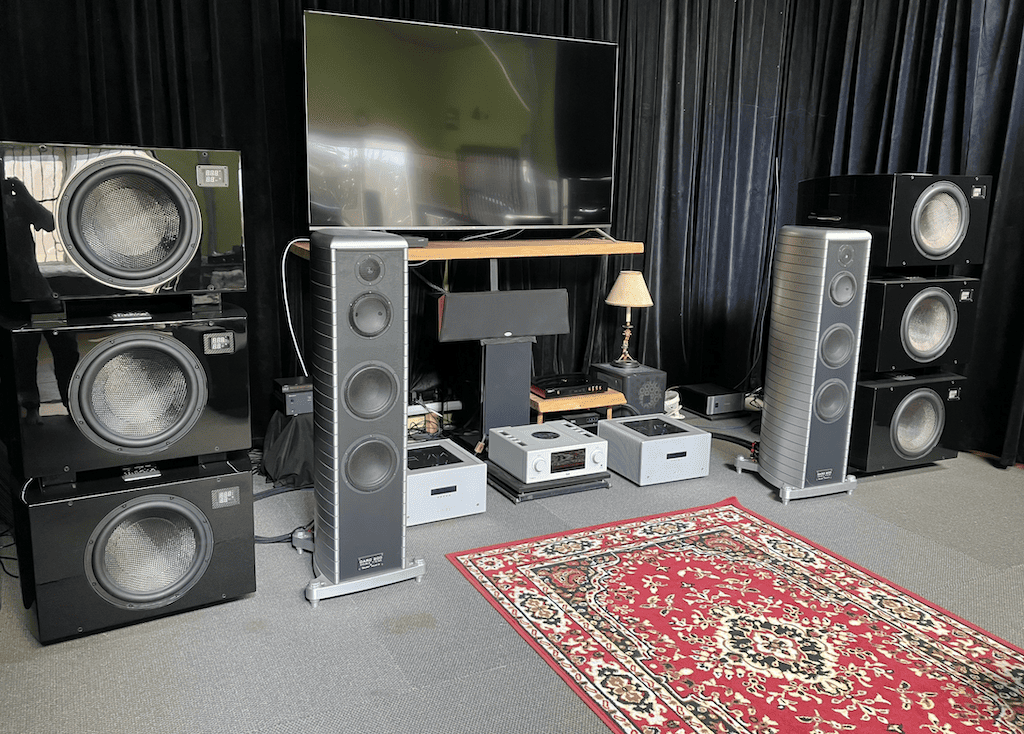Summary
Perreaux 200iX Integrated Amplifier REVIEW
NZ’s legendary amp brand Perreaux rolls out the first product under its new ownership, and ANDREW BAKER can’t stop listening.
$10,495
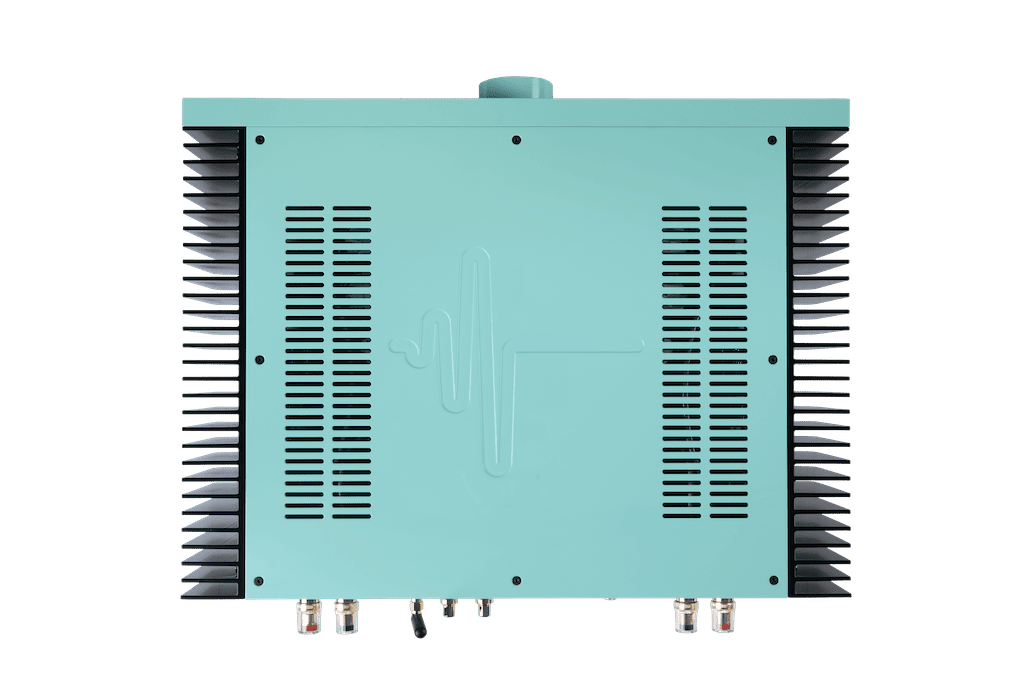 Since its inception back in 1974, Dunedin, NZ-based audio company Perreaux sure have had a knack for producing not only eye-catching but well-made and great sounding products. From the understatedly handsome Silhouette series to the excellent value two-tone Audiant and the boldly elegant Eloquence, the high-end audiophile community has so far been well-served by Perreaux in both looks and sonic performance.
Since its inception back in 1974, Dunedin, NZ-based audio company Perreaux sure have had a knack for producing not only eye-catching but well-made and great sounding products. From the understatedly handsome Silhouette series to the excellent value two-tone Audiant and the boldly elegant Eloquence, the high-end audiophile community has so far been well-served by Perreaux in both looks and sonic performance.
Would you like to support our mission to bring intelligence, insight and great writing to entertainment journalism? Help to pay for the coffee that keeps our brains working and fingers typing just for you. Witchdoctor, entertainment for grownups. Your one-off (or monthly) $5 or $10 donation will support Witchdoctor.co.nz. and help us keep producing quality content. It’s really easy to donate, just click the ‘Become a supporter’ button below.
The new iX amplifiers are certain to turn heads as well with their stunning range of colours that venture far from the usual black or silver. There’s a choice of an automobile-grade gloss finish in any colour of the rainbow – and if you’re feeling adventurous, you can get one in every colour of the rainbow. Don’t worry, you can get it in black too or, for a little extra money, you can get a custom colour scheme.
The last time I reviewed a Perreaux product the company was owned by Martin van Rooyen but it has since been sold to Edwin Nieman, a renowned electronics engineer. Nieman is an audio enthusiast whose company, under which Perreaux now resides, makes electronic displays, medical equipment and more. There is a real focus (or re-focus) under the new management on Perreaux being as near to 100% New Zealand as possible, with all in-house production – though toroidal transformers, for example, have to be brought in from overseas.
The 200wpc 200iX is the first integrated amplifier to come on the market under Nieman’s direction. A 300wpc 300iX is on its way very soon and a 100iX (100wpc, naturally) is also on the cards. There will also be pre and power amps and a phono stage all in the same chassis style. Perreaux’s Global Sales and Marketing Manager, Paul Sammes, told me there is no ‘Series’ as such; rather it is based on your power requirements. So, you get the same high-end build and performance, regardless of your choice of power output.
Build And Features
I’d looked up photos online of the 200iX when I found out one was coming my way, but still, I couldn’t help emitting an audible “Wow!” when I lifted it from the box. That glossy finish (mine is in gorgeous spearmint, very 1950s), the rounded edges, uncluttered front panel and black contrasting external heat sinks running down each side equates to a veritable work of art. Add the large central volume control and easy to read display window to the right and etched ‘Perreaux’ on the left and you’ll be making that cringey perfection hand gesture for days. And though reasonably hefty in the hands, the 200iX is pretty easy to handle. Weighing a manageable 19kgs, it measures 426mm x 344mm x 149mm (w, d, h) but, despite its relatively diminutive outward appearance, there’s rather a lot going on inside.
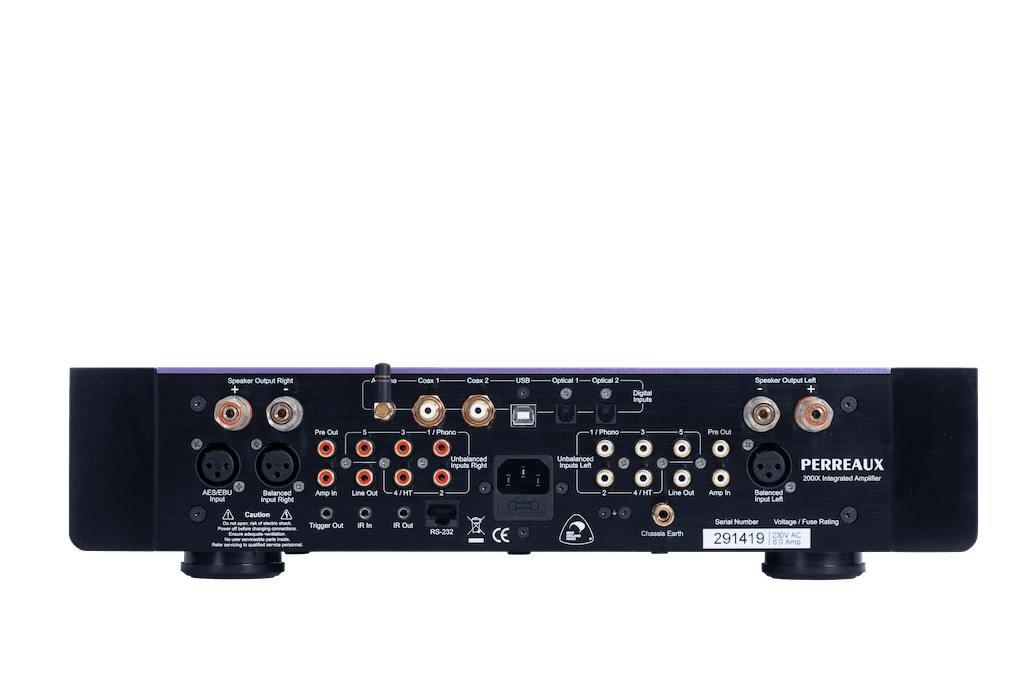 The 200iX is a Class AB amplifier, giving 200 watts into an 8ohm load, or 300W into 4ohms. Perreaux claims that due to its powerful MOSFET Class AB power stage and toroidal transformer, the 200iX will easily deliver 230W before clipping. Glancing inside, we find a microprocessor-controlled phonostage module, MM (40dB, 47k Ohms) and MC (60dB, 100 Ohms), an ES Sabre 9038 24/384kHz asynchronous USB DAC and Perreaux’s SXH2 Class A headphone amplifier, which can drive headphones from 8 to 600 Ohms (1W into 30 Ohms, 150mW into 300 Ohms output power).
The 200iX is a Class AB amplifier, giving 200 watts into an 8ohm load, or 300W into 4ohms. Perreaux claims that due to its powerful MOSFET Class AB power stage and toroidal transformer, the 200iX will easily deliver 230W before clipping. Glancing inside, we find a microprocessor-controlled phonostage module, MM (40dB, 47k Ohms) and MC (60dB, 100 Ohms), an ES Sabre 9038 24/384kHz asynchronous USB DAC and Perreaux’s SXH2 Class A headphone amplifier, which can drive headphones from 8 to 600 Ohms (1W into 30 Ohms, 150mW into 300 Ohms output power).
We also get a Bluetooth streaming module for streaming ‘CD quality’ music directly from your smartphone via Spotify or from saved files, using the excellent LDAC codec. Bluetooth is fed through the same ESS DAC for the best possible sound quality. A microprocessor-controlled protection feature usefully protects the unit from such annoyances as over-heating, over-current, fuse protection and DC offset. And it runs along in the background without affecting the sound signal. The stepped analogue volume control and user adjustable features are also managed using microprocessor technology, allowing inputs and controls to be customised with relative ease.
 There’s a good range of digital and analogue inputs, including balanced XLR, USB, coaxial, optical and AES. We get a Home Theatre loop, pre-out for using the 200iX as a preamplifier with a separate power amp and there are lineouts, two pairs of speaker binding posts as well as the previously mentioned headphone out (single-ended 6.35mm). Perreaux has even allowed for the use and easy installation of aftermarket isolation feet, in a choice of four-foot or three-foot configurations.
There’s a good range of digital and analogue inputs, including balanced XLR, USB, coaxial, optical and AES. We get a Home Theatre loop, pre-out for using the 200iX as a preamplifier with a separate power amp and there are lineouts, two pairs of speaker binding posts as well as the previously mentioned headphone out (single-ended 6.35mm). Perreaux has even allowed for the use and easy installation of aftermarket isolation feet, in a choice of four-foot or three-foot configurations.
The 200iX comes with a plastic remote which is… a remote. Fortunately, the alternative, a downloadable app for phones, tablets, and so forth, not only looks good on the screen but is very pleasant to use and very responsive. It controls the amp’s basic functions (volume, source select, display off, etc) via Bluetooth.
Listening
I used the 200iX to drive my Reference 3A and B&W 703 floor-standing speakers along with mid-range headphones from Beyerdynamic, Sennheiser and HiFiMan. To compare the onboard DAC, my Electrocompaniet ECD-2 and MHDT Stockholm DACs were used. For testing the phono stage section, I used my tube EAR 834P along with my A23 SUT (Denon tuned step-up transformer) and Lenco turntable/Analog Instruments tonearm/Hana EL/EMT TSD-15n. Also employed was the sublime The Wand 14/4 Turntable with 12″ The Wand tonearm. The Technics and my Unison Research Unico SE amplifiers were also used for comparison, as were Woo Audio WA6, Drop THX AAA 789 and FiiO K5 Pro headphone amplifiers. You can read a brief description of my new listening room in the Technics SU-R1000 review.
That Technics was one of the best amps I’ve heard in a while, at least so far as my own taste goes. Changing it out for the Perreaux required a period of adjustment on my part. On first impression, the 200iX presented a kind of relaxed smoothness that I didn’t immediately take to, but clearly, I was still pining for the Technics and needed time to get it out of my system (excuse the pun). It also soon dawned on me that certain things like the Stockholm DAC and Hana EL cartridge were exacerbating this to an extent and changing them out for alternative – more synergistic, perhaps – components made a notable improvement. The Hana and Stockholm are lovely pieces of equipment but they can be a little relaxed sounding compared to some of my other gear.
The Wand Turntable was already fitted with my moving coil EMT cartridge so that soon became my main testing source rig for vinyl. It seemed to have excellent synergy not only with the Perreaux amplifier but also its onboard phono stage. In fact, while the EAR/A23 combo added more spatial presence and insight, I was equally happy leaving them out of the chain.
Listening to the wonderful 2019 (I think) reissue of Pixies’ 1989 album Doolittle (4AD Records), I was thrilled to hear a greater emphasis on the drums and bass guitar. (Bassist Kim Deal is definitely one of my rock heroes and the Pixies just aren’t the same without her, in my book.) I could hear the different tones of individually plucked notes of the bass which remained separate and distinguishable from the kick drum. I could easily make out not so much the impact as the different tones and textures of all the components of the drumkit. Black Francis’ howls and wails were somewhat less jarring than usual and, along with Joey Santiago’s distinctive licks and solos, was a pleasant listen, if less in-your-face than I’ve been accustomed to over the last 25-odd years I’ve been listening to this album.
As was the case with Doolittle, on Black Sabbath’s ‘War Pigs’ from Paranoid (1970, Vertigo), bass and drums had good tonal definition and prominence. The dynamics were there but it was all a little bit softer and vocals and guitar were not as glaring or insistent. This isn’t actually a bad thing because if you just like a bit of Sabbath now and again but don’t want to be bombarded, especially in the upper frequencies, the 200iX keeps things running below the red line. All the elements were there – the vocal nuances, the microdynamics and the detail of the guitar – but it was all less visceral, more relaxed and pleasing if you will. Don’t get me wrong, I love the exhilaration of a full-on Sabbath onslaught, but sometimes you want to appreciate it differently.
From Golden Smog’s Weird Tales record (1998, Rykodisc) ‘Please Tell My Brother’ – which so impressed me through the Technics amp and turntable – was indeed captivating with the 200iX. The striking of the plectrum on the acoustic guitar strings, while not as starkly present as the Technics, was very much noticeable. I also felt Tweedy ‘stood’ a little further into the room when played through the Perreaux. There’s also an atmospheric sense that both amps portray nicely. A kind of quietness in the background as though the entire world has stopped everything to listen to a man declaring his love for his family.
Listening to Reb Fountain’s fantastic self-titled record (2020, Flying Nun), on ‘Don’t You Know Who I Am’, again I noted the excellent tonal definition of the bass guitar. There was good bottom-end extension here, contrasting nicely to Fountain’s stunningly clear and breathy vocal. I could make out the little intricacies and nuances of her voice yet without being distracted by too much detail.
On the digital side (Roon/Tidal/Spotify), I tend to listen to a lot of electronic-based music. Mostly sort of minimalist techno/EDM/IDM, from the likes of Shinichi Atobe, Eden Burns, Special Zip, Nice Girl and pretty much anything released by the label spclnch which, for some reason, I always read as ‘spinach’ but is in fact short for ‘space launch’. Check out the label’s Bandcamp for some spacey electro jams. Obviously, for this genre of music decent bottom-end extension is crucial but I also like good levels of detail, good sense of space and good driving rhythmic ability. The Technics was incredible in this regard and the Unison Research makes a good job of it too.
On the track ‘Ufologist (Asvajit Remix)’ on Special Zip’s Minimal Antagonist (2021, spclnch) there’s satisfyingly deep and well-defined thudding bass with a wonderfully crisp percussive top end. Mingling amongst the beats and in the background are deliciously textured samples and sounds that add intrigue and atmosphere. The 200iX pulled it off nicely with a good balance of detail retrieval, frequency response and liveliness. The sort of stark isolating and illuminating of individual effects wasn’t quite up to the Technics’ standard but was impressive nonetheless. You could almost say the Perreaux sounded more natural in that regard, allowing the listener to focus on the journey as a whole with the individual elements adding just enough intrigue so as not to cause too much distraction.
Cat Power’s latest album of covers, the appropriately titled Covers (2020, Domino) is a lovely recording in a swampy style quite reminiscent of her earlier album Jukebox (2008, Matador). Playing her stunning cover of actor Ryan Gosling’s band Dead Man’s Bones’ ‘Pa Pa Power’, the drums hit nicely, accompanied by a good clean textured thrumming bass line. Chan Marshall’s slightly husky, wearily imploring vocal was clear from the mix and when the chorus comes in with her overdubbed backing vocal, it sprang clearly further forward into the room. Certainly, more so than through the Unison Research amp, which also has a more boisterous, warm-tinged midrange and treble. Imaging and frequency range through the 200iX were well served and neatly organised, making for a very pleasing listen.
Overall, the DAC section was highly enjoyable, no matter the genre. Engaging, well serving across the frequency range and no noise floor or digital artefact to be heard. Unless you want something much more exotic and costly, I recommend sticking with the Perreaux. I found there was really very little to distinguish between the Perreaux and Electrocompaniet DACs. There might have been a hint more detail and presence with the Electrocompaniet, but it also could be just ‘owner’s bias’. Whatever the case, they are both fine DACs and in my opinion are more-or-less on par with one another.
Headphones
My Sennheiser HD660S 150 Ohm open-back dynamic headphones pair beautifully with OTL tube amplifiers – there’s just something almost indefinably lovely about the combination. But they can perform well with solid-state amps too and the Perreaux proved to be no exception. Plugged into the 200iX there was good frequency response across the range, from the really decent bottom end to a clear crisp treble which never extended into sibilance or pain. Soundstage and imaging were exceptionally good, with no clutter or congestion within my head. A great pairing in my opinion.
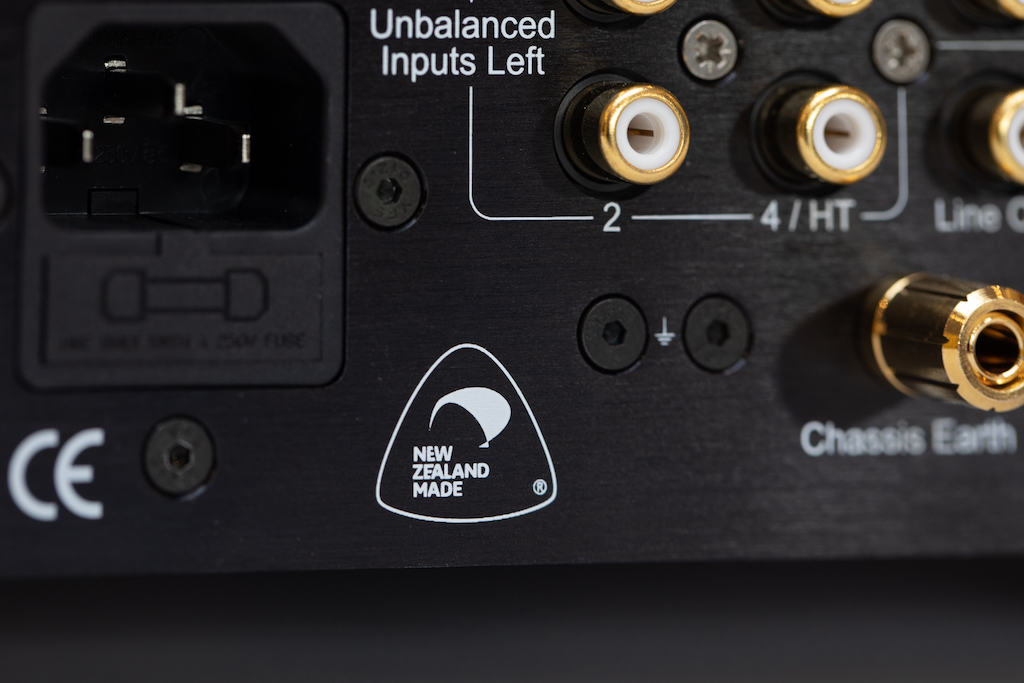 The fast and detailed AAA 789 is a bit of a warts-and-all amp, presenting you with the music as it comes in rather explicit fashion and, depending on what headphones or IEMs I’m using, I find it can get a little fatiguing after a while. The Woo Audio, on the other hand, sounds more expansive and keeps everything slightly more separated, adding a little colour to the sound; great for long sessions.
The fast and detailed AAA 789 is a bit of a warts-and-all amp, presenting you with the music as it comes in rather explicit fashion and, depending on what headphones or IEMs I’m using, I find it can get a little fatiguing after a while. The Woo Audio, on the other hand, sounds more expansive and keeps everything slightly more separated, adding a little colour to the sound; great for long sessions.
I feel the Perreaux leans more towards the Woo, the sound spreading out more in all directions, with a hint of warmth, good detail retrieval and rich in texture and tone. The 789 keeps things tightly inside your head between the headphones, bass appears to have more slam and depth but at the same time, depending on what you’re listening to, you’re being bombarded with everything else. It can seem fast and exciting but the Woo and 200iX give a nice orderly, airy soundstage and the highs, though as crisp and clean as the 789, sound more natural somehow.
My HiFiMan Planar Magnetic headphones prefer solid state to tubes and sounded fantastic driven by the 200iX. They were fast and crisp with none of the darkness of tone that can sometimes lurk in the 660S’s. They sound a little dull with the 789, despite it having the juice to drive them, but the Perreaux/HiFiMan combo was extremely enjoyable. They need a bit more grunt to drive them than my other headphones and the Perreaux had plenty on offer.
 It’s worth mentioning that there are two manually adjustable options for impedance-setting depending on the demands of your headphones: 8 – 250 ohms and 250 – 600 ohms. You can also choose between Class A being always on or as required. As mentioned, the headphone section is the estimable SXH2, based on the highly regarded separate headphone amp from many years ago. According to Paul Sammes, this was essentially brought out of storage and improved upon and, several iterations later, included in the iX amplifiers.
It’s worth mentioning that there are two manually adjustable options for impedance-setting depending on the demands of your headphones: 8 – 250 ohms and 250 – 600 ohms. You can also choose between Class A being always on or as required. As mentioned, the headphone section is the estimable SXH2, based on the highly regarded separate headphone amp from many years ago. According to Paul Sammes, this was essentially brought out of storage and improved upon and, several iterations later, included in the iX amplifiers.
Final Points
Hard edges of music – guitar notes, brass, vocals within the midrange – can seem somewhat softened by the 200iX. This could be what at first made me a little indifferent but returning to it after extended sessions with other amplifiers, I found it to be in fact a lovely contrast. If you’ll pardon the following terms, I can’t help thinking of the 200iX as sounding buttery, pillowy and comfortable, which is no bad thing. There is a lovely smooth fluidity to the way, for example, drums are struck which makes them really pleasurable to hear. You still get snappy transients and sharp angular guitar notes or horn blasts, but it’s eased off slightly. Separation and definition of images are excellent and often stunning, especially when you get a surprise instrument solo – there were plenty of occasions when I thought ‘that’s right beside me!’
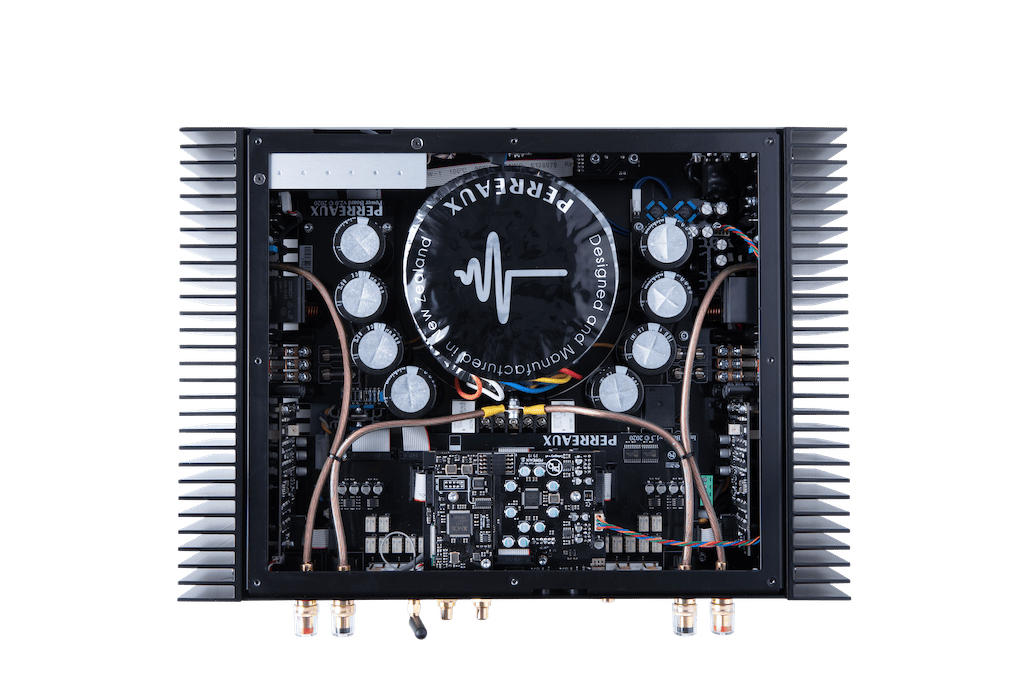 Special mention must go to the Bluetooth streaming function. Not only did it work without a glitch every time, but it sounded really good – quite possibly the best BT I have heard to date. I heard good image separation, chunky bass, textures and timbres. Just one point to note is that I had to turn the volume up considerably louder than with the other inputs to get similar levels. However, I have since learnt that this can be adjusted in the input set up, by +/- 12dB (Paul recommends +4dB). Also, it didn’t come up as an option in Tidal Connect so I was unable to try that.
Special mention must go to the Bluetooth streaming function. Not only did it work without a glitch every time, but it sounded really good – quite possibly the best BT I have heard to date. I heard good image separation, chunky bass, textures and timbres. Just one point to note is that I had to turn the volume up considerably louder than with the other inputs to get similar levels. However, I have since learnt that this can be adjusted in the input set up, by +/- 12dB (Paul recommends +4dB). Also, it didn’t come up as an option in Tidal Connect so I was unable to try that.
As a matter of interest, I compared the Spotify stream and a CD FLAC rip stored on my phone of John Grant’s ‘Pale Green Ghosts’ from the album of the same name (2013, Bella Union). There was, without doubt, more body, tonal texture and sense of space from the CD rip but it wasn’t so drastically different that I couldn’t enjoy Spotify’s version. Listening to some synthy dub music on Spotify, I was treated to a solid bed of bass from behind the speakers with various melodic lines and other effects floating clearly quite far into the room.
I’m glad I was able to persevere with the 200iX because its talents became more obvious to me over time. It may not be the first choice for diehard headbangers but nor is it the proverbial pipe-and-slippers laid-back type of amp. It doesn’t overwhelm with clinical details or blast you against the back wall but should win you over with its smooth, three-dimensional portrayal of music. That deep, tuneful, well-controlled lower frequency area alone makes it worth considering. But it’s also a comfortable sounding amp, luring you in for a cosy, smooth ride, and there’s nothing wrong with that.
None of the onboard added features are mere tokens or afterthoughts. The phono stage and DAC are top class, Bluetooth streaming a joy, and the highly capable headphone amp section is an exceptionally generous bonus. Fed with quality music, the 200iX really shines. Add the best quality vinyl rig you can and a decent streaming device (an onboard streamer might have been nice – brands like Hegel seem to include this as standard) and you’re set for years of musical enjoyment.
Sometimes perhaps I’d like a bit more of what amps like the Technics have to offer in terms of balls-out dynamics, dazzling detail and user configuration, but for all it has to offer, if the 200iX was my only option, I wouldn’t complain one bit.
If this is the trip Perreaux is on under its new ownership, I shall gladly tune in.

